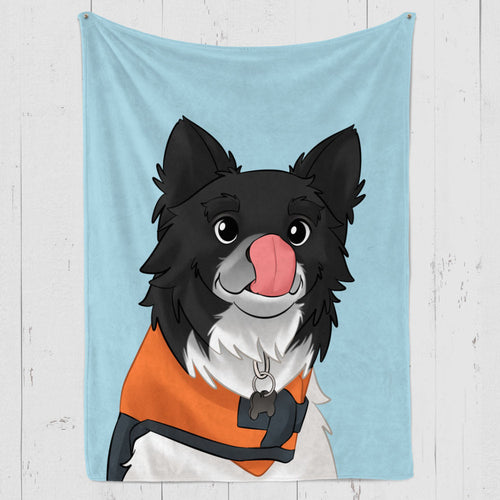
You have probably often seen your furry friend take a swim at the pool if you have a pet dog. However, the question arises as to whether the dog is safe in the chlorine levels of the swimming pool. Although the chlorine levels in pools are safe for human beings, however, it poses quite some peril to the canines. Dogs tend to be susceptible to the chlorine levels of swimming pools since they have highly sensitive eyes and ears.
Now let us try to answer the question of whether dogs can swim in chlorine pools by looking at the effects of chlorine water on dogs.
Can Drinking Pool Water be Hazardous for Dogs?
Is chlorine water bad for dogs? The recommended levels at swimming pools are between 1 to 3 milligrams per liter. According to the Center for Disease Control and Prevention (CDC), chlorinated water is safe for dogs in concentration of up to 4 milligrams per liter. Thus, it is safe for dogs to drink a little pool water.
However, if it becomes the habit of the dog to drink pool water or he or she ingests too much while swimming, there are chances of it causing nausea, vomiting, diarrhea as well as erosion of the esophagus. In more extreme cases, your dog’s health can be affected by water intoxication, which will lower the sodium levels in their blood.
Thus, you should always make sure that the dog has separate drinking water so that drinking from the pool can be avoided.
Can Pool Water Affect the Dog’s Skin?

Is chlorine water bad for a dog’s skin? Generally, when the pool water has unbalanced chemical levels or is dirty, it can cause skin irritation. When putting chlorine in the pool, it destroys all algae and other harmful microorganisms. Pools without chlorine can become the breeding ground for different microorganisms like fungi, bacteria, algae, and parasites.
If your little pet is having short swimming sessions in your chlorinated pool, it is generally harmless. However, if the dog stays in the pool for a long time, the long exposure to chlorine and other pool chemicals can lead to irritation in the dog’s eyes, skin, paws, and coat. The irritation might last for a short time after the dog gets out of the pool.
Extended periods of time in the chlorinated pool might also cause dryness of your dog’s coat since it removes the natural oil from the coat. This will make the fur brittle and dull. Furthermore, the dry skin will make the dog scratch itself excessively, leading to hair loss and skin infections.
Should You Consider Lowering Your Pool’s Chlorine Level?
Although lowering the chlorine concentration of pools for your loved pet might seem a good option, but it isn’t. Untreated or improperly treated swimming pools become home to a variety of microorganisms, like fungi, bacteria, algae and parasites.
These can have an adverse effect on your dogs through accidental inhalation, ingestion, and contact with skin or mucous membranes. Contact with these microorganisms might prove to be way more harmful to your dogs than chlorine.
Is it Possible for Puppies to Swim in Chlorine Pools?
Just like adults, puppies also do not have any major health risks from chlorinated pools. However, drinking pool water might cause gastrointestinal problems and skin irritations, as in adult dogs. But due to their smaller size and delicate skin, puppies are more susceptible to such problems. Thus, it is imperative that you should limit swimming sessions of puppies to short periods of time.
Apart from these problems, the larger question is whether at all you should allow your puppy to swim, their age, and ability. A puppy generally learns to swim when he or she is at least 10 weeks or older. Since puppies are not experienced swimmers, you need to give a lot of attention to the pool safety of your pooch.
Are Saltwater Pools Better for Your Pet?
As the name suggests, saltwater pools have salt which is used to cleanse the pool. Saltwater pools have their own pros and cons.
Saltwater pools are generally considered safer for dogs since chlorine pools tend to cause skin and eye irritation and other problems for them. However, saltwater pools are equally, if not more harmful if accidentally or intentionally ingested by the dog.
Also in exceptional cases, drinking too much salt water may lead to diarrhea and other health problems. Dogs that are having health problems like heart disease and renal illness and are thus on a low-sodium diet must be kept away from saltwater swimming pools.
If you are having a saltwater pool, then you should also look out for indications of salt sickness when your dog is having a swim. Such indications include lethargy, weakness, diarrhea, vomiting, frequent urination, excessive thirst, tremors, and seizures.
What are Some Pool Safety Measures for Dogs While Swimming?

It is extremely crucial for you to keep your dog under close supervision while it enjoys the pool. Here are some of the safety precautions you must follow to keep your dog from the risks of swimming:
Provide a life vest for the dog:
If your pup or dog is a beginner or a weak swimmer you need to keep a life vest on your dog to prevent it from drowning.
Properly maintain and clean your pool:
You must make sure that the pool is regularly and properly cleaned and there are no harmful chemicals in it. Make sure that its chlorine levels are safe for the dog to take a swim.
Store concentrated chlorine and other pool cleaners in a safe place:
You have to store all kinds of pool cleaners and chlorine tablets out of the reach of your inquisitive little buddy. Although the chlorine levels of the swimming pool might not affect the dog, however, any concentrated chemicals or chlorine will be hazardous and even fatal for the dog.
Provide plenty of fresh drinking water for the dog:
Making fresh drinking water accessible to the dog will help in preventing it from drinking regularly from the pool. It will also help in preventing heatstroke.
Look out for signs of irritations or sickness:
Always keep an eye out for signs and symptoms such as red eyes or coughing and immediately remove them from the pool.
Rinse your dog properly after swimming:
Properly rinsing your dog off after a swim will help limit their exposure to chlorine and prevent skin irritations. Also rub their ears dry with a soft towel will help in stopping any chances of ear infections.
How Do Dogs Affect Your Pool?
Even though you might take good care of your little friend, but still when a dog enters a swimming pool, they do much harm to the pool.
When entering the pool, a dog introduces a lot of bacteria, parasites, and dirt particles in the water. Furthermore, dogs are notorious for shedding hair, which might prevent the filters from functioning properly. Even after having a bath, a dog introduces a lot of fog shampoos and other grooming products in the pool. These products have agents which cause harm to the pool.
Moreover, the dirt particles, body oils, and dead skin introduces phosphates and thus can significantly increase the balance of the water. This water can cause skin problems in humans. The long sharp nails of your furry friend can also damage your pool lines and equipment, and might cause chemical imbalances and leaks in the pool water.
Are There Any Alternatives for Chlorine Pools for Dogs?
Can dogs go in a pool? What are the alternatives for chlorine pools? Although chlorine pools do not cause much harm to dogs, however, there are several other safer alternatives that you can use for your little friend. Some of these are:
Bromine:
One of the most popular alternatives for chlorine in pools is the use of bromine. Bromine poses less danger and has a less pungent smell than chlorine. It is less irritating for the dog’s eyes and skin and can be a good option if you are willing to pay the price.
Ionizers:
Another alternative to chlorine in pool are ionizers. These rely on two metals, mostly copper and silver, sent charged into the pool water as part of the cleansing process. For the oxidizer, a very small amount of chlorine of bromine will do. This substantially reduce the amount of chlorine and thus, causes no irritation for your furry friends.
PHMB:
Another method which completely eliminates the use of chlorine is PHMB. It stands for poly hexamethylene biguanide. It is commonly known by the brand names Baquacil and SoftSwim.
Should You Allow Your Dog to Drink Water From a Chlorine Pool?
If your dog takes a sip or two from a well-maintained chlorine pool does not pose much threat to your pet dog. However, you should abstain from making a drink from the pool a regular practice for your dog.
You need to prevent your little buddy from drinking from the pool immediately after “shock” treatment of the pool or whenever chemicals like algaecide are being used.
However, if your pool isn’t maintained well enough, then it is better to keep your dog from drinking from that source.
What are the Risks Associated with Dogs Swimming in Chlorine Pools?
While the risks are quite low, but still one needs to be cautious about the risks associated with dogs in chlorine pools. Apart from getting sick from drinking the water of the chlorine pools, a dog can also have irritated skin and eyes from the chlorinated pools.
However, none of the problems should be a major concern. For example, unless a dog regularly drinks from the Chlorine pools, he or she has little chance of falling sick. Similarly, if the dog is not kept in the pool for extended amounts of time, he runs a low risk of getting a skin or eye infection.
Downing is a major risk for all dogs. A Tennessee woman saved a dog from a frozen pool when her dog fell in and almost drowned. However, one of the biggest mistakes of pet owners is to force their dogs to swim in the pool. You have to let a new puppy get into the pool of its own free will and pace. You also have to keep it under close watch and will have to teach it to climb up the pool. Not all dogs are good swimmers and they must not be forced to swim.
What to do if Your Dog is Having a Negative Reaction to Swimming in a Chlorine Pool?

While swimming in the chlorine pool your pet might develop symptoms of skin irritation or water intoxication. Cases of water intoxication happens when a dog drinks too much pool water very quickly. Some of the symptoms of water intoxication are:
- Lethargy
- Drooling
- Restlessness
- Loss of coordination such as stumbling or staggering
- Bloating
- Dilated pupils
- Glazed eyes
- Pale gums
If symptoms persist, then immediately call a veterinarian or take the dog to a veterinary clinic as soon as possible.
Takeaway
Can dogs swim in chlorine pools? Yes, they can. Dogs love to have a nice little swim, especially during the summer months. However, keep your chlorine pools clean and chemically balanced so that your dog does not have any health issues from the swim. Also, keep your dog under constant supervision while it is swimming.
Recommended Articles :
Similar Articles
Latest Review on Woof Blankets
To have such a masterpiece by my side every day is a gift for me and my memories with Rex. Thank you WoofBlankets for such an opportunity to recreate his image on a blanket.Lara o’ Miguel US, California

COLLECTION WORTH EVERY PENNY
BEST SELLERS
-
Woofy Single Color Custom Pet Blanket
![Woofy Single Custom Pet Blanket – Woof Blanket]()
- -41%
BlanketsSHOP NOW- Regular price
- from $64.95
- Sale price
- from $64.95
- Regular price
-
$109.95 - Unit price
- per
Sold out -
The French Sailor - Custom Pet Portrait
![]()
- -25%
CanvasSHOP NOW- Regular price
- from $59.95
- Sale price
- from $59.95
- Regular price
-
$79.95 - Unit price
- per
Sold out -
Summer Time Custom Pet Blanket
![Summer Time Custom Pet Blanket]()
- -39%
BlanketsSHOP NOW- Regular price
- from $69.95
- Sale price
- from $69.95
- Regular price
-
$114.95 - Unit price
- per
Sold out -
Pet Memorial Custom Photo Collage Blanket
![Personalized pet memorial quilt with photos]()
- -41%
BlanketsSHOP NOW- Regular price
- from $64.95
- Sale price
- from $64.95
- Regular price
-
$109.95 - Unit price
- per
Sold out -
4th of July Custom Pet Blanket
![4th of July Custom Pet Blanket Online]()
- NEW
- -39%
BlanketsSHOP NOW- Regular price
- from $69.95
- Sale price
- from $69.95
- Regular price
-
$114.95 - Unit price
- per
Sold out -
Modern Pet Portraits
![Cute Dog Modern Pet Portraits Online]()
- NEW
- -36%
CanvasSHOP NOW- Regular price
- from $59.95
- Sale price
- from $59.95
- Regular price
-
$93.95 - Unit price
- per
Sold out -
The Admiral - Custom Pet Portrait
![The Admiral - Custom Pet Portrait Online]()
- NEW
- -25%
CanvasSHOP NOW- Regular price
- from $59.95
- Sale price
- from $59.95
- Regular price
-
$79.95 - Unit price
- per
Sold out -
Woof Splash Custom Pet Blanket
![Woof Splash Custom Pet Blanket]()
- -39%
BlanketsSHOP NOW- Regular price
- from $69.95
- Sale price
- from $69.95
- Regular price
-
$114.95 - Unit price
- per
Sold out -
The Policeman - Custom Pet Portrait
![]()
- NEW
- -25%
CanvasSHOP NOW- Regular price
- from $59.95
- Sale price
- from $59.95
- Regular price
-
$79.95 - Unit price
- per
Sold out -
The General - Custom Pet Portrait
![]()
- NEW
- -25%
CanvasSHOP NOW- Regular price
- from $59.95
- Sale price
- from $59.95
- Regular price
-
$79.95 - Unit price
- per
Sold out -
Woof Love Custom Pet Blanket
![Woof Love Custom Pet Blanket]()
- -39%
BlanketsSHOP NOW- Regular price
- from $69.95
- Sale price
- from $69.95
- Regular price
-
$114.95 - Unit price
- per
Sold out -
The Ambassador - Custom Pet Portrait
![The Ambassador - Custom Pet Portrait Online]()
- NEW
- -25%
CanvasSHOP NOW- Regular price
- from $59.95
- Sale price
- from $59.95
- Regular price
-
$79.95 - Unit price
- per
Sold out -
Fall In Love Custom Pet Blanket
![Fall In Love Custom Dog Blanket]()
- NEW
- -39%
BlanketsSHOP NOW- Regular price
- from $69.95
- Sale price
- from $69.95
- Regular price
-
$114.95 - Unit price
- per
Sold out -
Cartoonized Pet Portraits (New)
![Cartoonized Pet Custom Portraits Online]()
- -36%
SHOP NOW- Regular price
- from $59.95
- Sale price
- from $59.95
- Regular price
-
$93.95 - Unit price
- per
Sold out -
The Classy Lady - Custom Pet Portrait
![The Classy Lady]()
- NEW
- -25%
CanvasSHOP NOW- Regular price
- from $59.95
- Sale price
- from $59.95
- Regular price
-
$79.95 - Unit price
- per
Sold out -
The Duke - Custom Pet Portrait
![The Duke - Custom Pet Portrait]()
- NEW
- -25%
CanvasSHOP NOW- Regular price
- from $59.95
- Sale price
- from $59.95
- Regular price
-
$79.95 - Unit price
- per
Sold out -
Dog In Suit- Custom Pet Portrait
![Dash Dog In Suit- Custom Pet Portrait Online]()
- NEW
- -25%
CanvasSHOP NOW- Regular price
- from $59.95
- Sale price
- from $59.95
- Regular price
-
$79.95 - Unit price
- per
Sold out -
The Princess - Custom Pet Portrait
![]()
- NEW
- -25%
CanvasSHOP NOW- Regular price
- from $59.95
- Sale price
- from $59.95
- Regular price
-
$79.95 - Unit price
- per
Sold out -
Modern Pet Portrait with One Mug
![Modern Pet Portrait with One Mug]()
- -25%
Print MaterialSHOP NOW- Regular price
- from $99.95
- Sale price
- from $99.95
- Regular price
-
$133.95 - Unit price
- per
Sold out -
The Aristocrat - Custom Pet Portrait
![The Aristocrat - Custom Pet Portrait At Best Price]()
- NEW
- -25%
CanvasSHOP NOW- Regular price
- from $59.95
- Sale price
- from $59.95
- Regular price
-
$79.95 - Unit price
- per
Sold out -
Single Color Custom Blanket with 1 Mug
![Single Color Custom Blanket with 1 Mug]() BlanketsSHOP NOW
BlanketsSHOP NOW- Regular price
- from $99.95
- Sale price
- from $99.95
- Regular price
-
- Unit price
- per
Sold out -
Single Color Custom Blanket with 2 Pillows
![Single Color Custom Pet Blanket with 2 Pillows]()
- -21%
BlanketsSHOP NOW- Regular price
- from $99.95
- Sale price
- from $99.95
- Regular price
-
$125.95 - Unit price
- per
Sold out -
The Dog in Suit Custom Pet Mug
![]()
- -20%
MugsSHOP NOW- Regular price
- $39.95
- Sale price
- $39.95
- Regular price
-
$49.95 - Unit price
- per
Sold out -
Angel Custom Pet Mug
![]()
- -20%
MugsSHOP NOW- Regular price
- $39.95
- Sale price
- $39.95
- Regular price
-
$49.95 - Unit price
- per
Sold out -
This Human Belongs To - Custom Pet Mug
![]()
- NEW
- -20%
MugsSHOP NOW- Regular price
- $39.95
- Sale price
- $39.95
- Regular price
-
$49.95 - Unit price
- per
Sold out -
It's Not Dog Hair Custom Pet Mug
![]()
- NEW
- -20%
MugsSHOP NOW- Regular price
- $39.95
- Sale price
- $39.95
- Regular price
-
$49.95 - Unit price
- per
Sold out -
My Dog Is My Valentine Custom Pet Mug
![]()
- NEW
- -20%
MugsSHOP NOW- Regular price
- $39.95
- Sale price
- $39.95
- Regular price
-
$49.95 - Unit price
- per
Sold out -
3 Photos With Message Custom Pet Mug
![]()
- NEW
- -20%
MugsSHOP NOW- Regular price
- $39.95
- Sale price
- $39.95
- Regular price
-
$49.95 - Unit price
- per
Sold out -
My Valentine Has Four Legs- Personalized Mugs
![]()
- NEW
- -20%
MugsSHOP NOW- Regular price
- $39.95
- Sale price
- $39.95
- Regular price
-
$49.95 - Unit price
- per
Sold out -
Dog Mamma Custom Pet Coffee Mug
![]()
- -20%
MugsSHOP NOW- Regular price
- $39.95
- Sale price
- $39.95
- Regular price
-
$49.95 - Unit price
- per
Sold out -
Uncle Sam - Custom Pet Portrait
![]()
- NEW
- -25%
CanvasSHOP NOW- Regular price
- from $59.95
- Sale price
- from $59.95
- Regular price
-
$79.95 - Unit price
- per
Sold out -
The Revolutionary Emperor - Custom Pet Portrait
![]()
- NEW
- -25%
CanvasSHOP NOW- Regular price
- from $59.95
- Sale price
- from $59.95
- Regular price
-
$79.95 - Unit price
- per
Sold out -
The Princess Paws - Custom Pet Portrait
![]()
- -25%
CanvasSHOP NOW- Regular price
- from $59.95
- Sale price
- from $59.95
- Regular price
-
$79.95 - Unit price
- per
Sold out -
Exclusive Custom Pet Blanket
![Exclusive Custom Pet Blanket]()
- -39%
BlanketsSHOP NOW- Regular price
- from $69.95
- Sale price
- from $69.95
- Regular price
-
$114.95 - Unit price
- per
Sold out -
The Dark Crusader Knight - Custom Pet Portrait
![]()
- -25%
CanvasSHOP NOW- Regular price
- from $59.95
- Sale price
- from $59.95
- Regular price
-
$79.95 - Unit price
- per
Sold out


























































